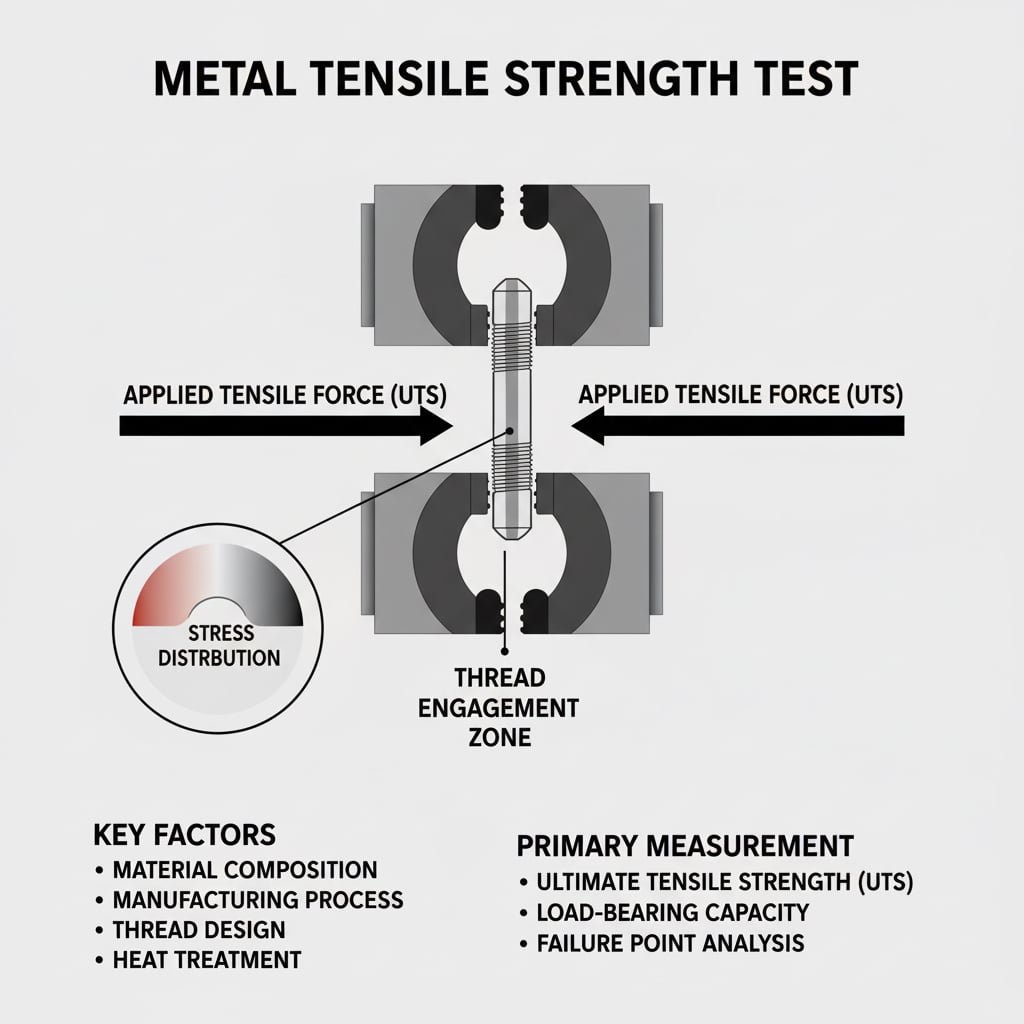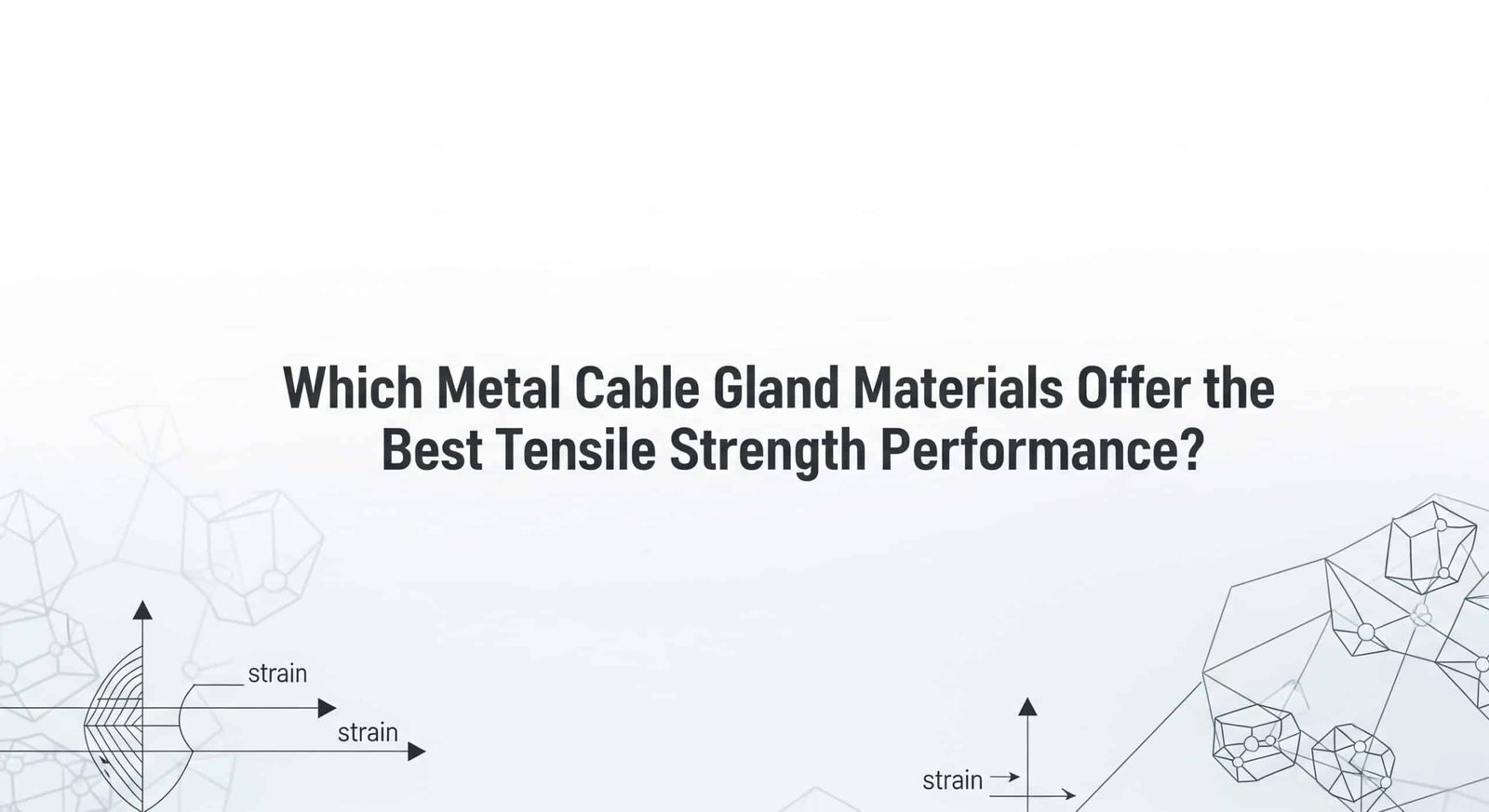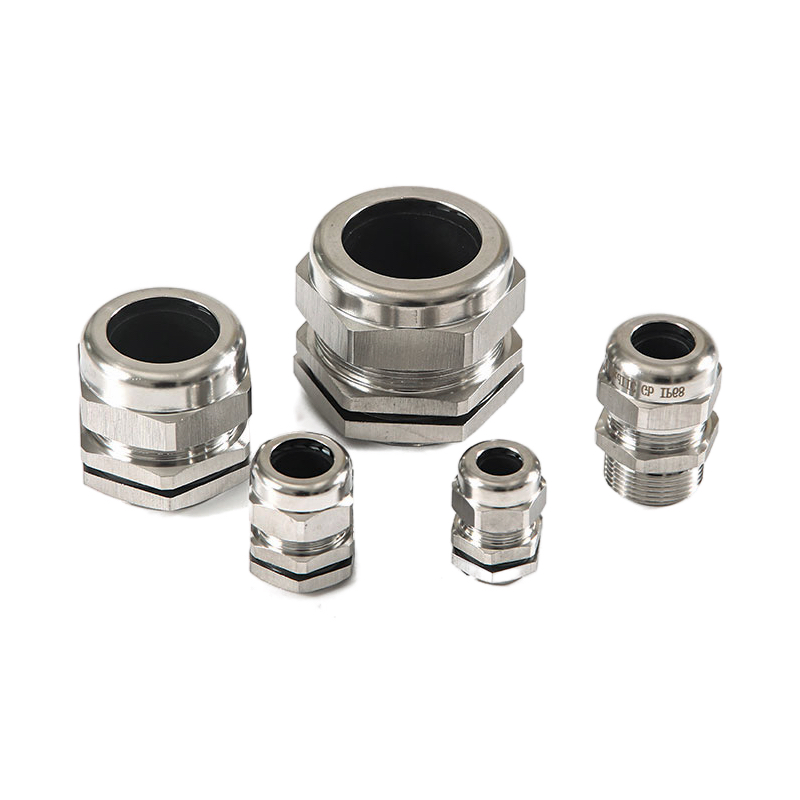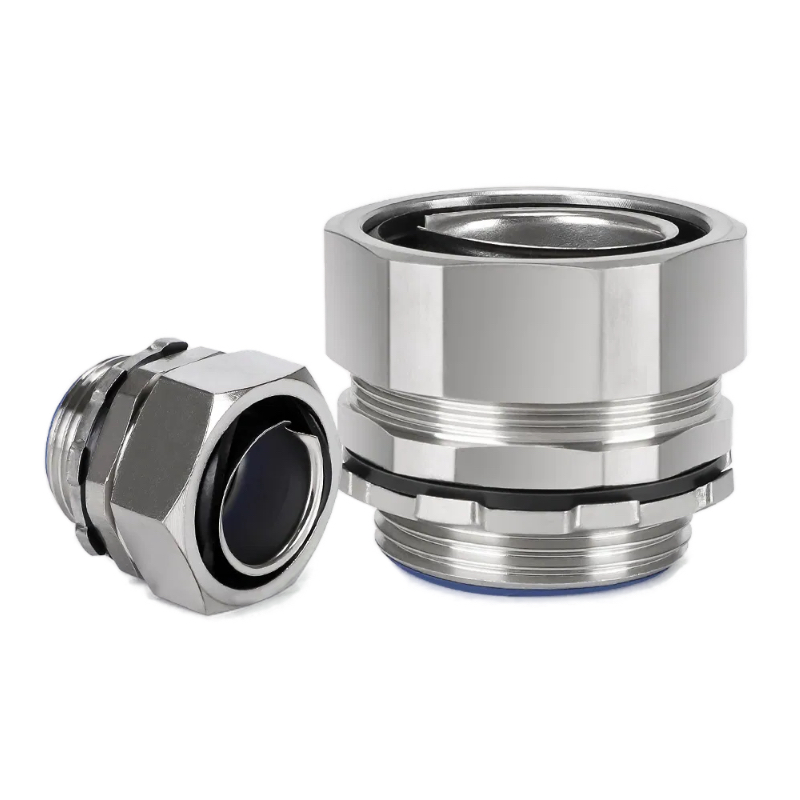Introduction
Ever wondered why some cable glands fail under mechanical stress while others withstand decades of harsh industrial conditions? The answer lies in understanding tensile strength properties of different metal materials used in cable gland manufacturing.
Metal cable glands made from stainless steel 316L offer superior tensile strength (580-750 MPa) compared to brass (300-400 MPa) and aluminum alloys (270-310 MPa), making them ideal for high-stress applications in marine, petrochemical, and heavy industrial environments.
As someone who’s been in the cable connector industry for over 10 years, I’ve seen countless projects where material selection made the difference between success and costly failures. Let me share what I’ve learned about choosing the right metal cable gland material for your specific tensile strength requirements.
Table of Contents
- What Determines Tensile Strength in Metal Cable Glands?
- How Do Brass Cable Glands Perform Under Stress?
- Why Choose Stainless Steel for High-Tensile Applications?
- What About Aluminum Cable Gland Alternatives?
- How to Select the Right Material for Your Application?
- FAQs About Metal Cable Gland Tensile Strength
What Determines Tensile Strength in Metal Cable Glands?
Understanding tensile strength fundamentals is crucial for making informed material decisions in cable gland applications.
Tensile strength in metal cable glands depends on material composition, manufacturing process, thread design, and environmental factors, with ultimate tensile strength (UTS)1 being the primary measurement for load-bearing capacity.

Key Factors Affecting Tensile Performance
The tensile strength of metal cable glands isn’t just about the base material. Here’s what really matters:
Material Composition: The alloy composition significantly impacts strength. For instance, our stainless steel 316L cable glands contain molybdenum, which enhances both tensile strength and corrosion resistance compared to standard 304 grades.
Manufacturing Process: CNC machining versus casting affects grain structure and stress distribution. At Bepto, we use precision CNC machining for critical components to ensure consistent tensile properties across our product range.
Thread Design: The thread pitch, depth, and profile directly influence how loads are distributed. Metric threads typically offer better tensile performance than NPT threads2 due to their finer pitch and larger engagement area.
Heat Treatment: Proper heat treatment can increase tensile strength by 20-30% in certain alloys. Our brass cable glands undergo controlled cooling processes to optimize their mechanical properties.
How Do Brass Cable Glands Perform Under Stress?
Brass has been the traditional choice for cable glands, but how does it really perform under tensile loads?
Brass cable glands typically offer tensile strengths between 300-400 MPa, making them suitable for standard industrial applications with moderate mechanical stress, though they may not be ideal for high-vibration or extreme load conditions.
Real-World Performance Analysis
Last year, I worked with David, a procurement manager from a manufacturing plant in Manchester, UK. His facility was experiencing frequent cable gland failures in their automated production lines. The existing brass cable glands were rated at 350 MPa tensile strength, but the constant vibration and cable movement were causing premature failures.
Brass Advantages:
- Excellent machinability and cost-effectiveness
- Good electrical conductivity for EMC applications
- Corrosion resistance in standard environments
- Easy installation and maintenance
Brass Limitations:
- Lower tensile strength compared to stainless steel
- Susceptible to stress corrosion cracking3 in certain environments
- Dezincification4 risk in marine applications
- Limited performance in extreme temperatures
Tensile Strength Comparison Table
| Material Grade | Tensile Strength (MPa) | Yield Strength (MPa) | Applications |
|---|---|---|---|
| Brass CW617N | 300-400 | 120-200 | Standard industrial |
| Brass CW614N | 350-450 | 150-250 | Heavy-duty applications |
| Naval Brass | 380-480 | 180-280 | Marine environments |
Why Choose Stainless Steel for High-Tensile Applications?
When maximum tensile strength is non-negotiable, stainless steel cable glands are the clear choice.
Stainless steel 316L cable glands deliver exceptional tensile strength of 580-750 MPa, combined with superior corrosion resistance, making them essential for petrochemical, offshore, and high-stress industrial applications.
Superior Performance Under Extreme Conditions
I remember working with Hassan, who owns a petrochemical facility in Abu Dhabi, UAE. His plant required cable glands that could withstand not only the corrosive environment but also significant mechanical stress from thermal expansion and equipment vibration. Standard brass solutions simply couldn’t meet his requirements.
Stainless Steel 316L Advantages:
- Outstanding tensile strength (580-750 MPa)
- Excellent corrosion resistance in harsh environments
- Temperature stability from -60°C to +200°C
- Low magnetic permeability for sensitive applications
- Long-term reliability with minimal maintenance
Grade Comparison:
- 304 Stainless Steel: 515-620 MPa tensile strength, suitable for general industrial use
- 316L Stainless Steel: 580-750 MPa tensile strength, ideal for marine and chemical applications
- Super Duplex 25075: 800-1000 MPa tensile strength, for extreme offshore conditions
The investment in stainless steel cable glands typically pays off through reduced maintenance costs and improved system reliability. Hassan’s facility has been running our 316L stainless steel cable glands for three years without a single failure.
What About Aluminum Cable Gland Alternatives?
Aluminum cable glands offer an interesting middle ground between cost and performance.
Aluminum alloy cable glands provide moderate tensile strength (270-310 MPa) with excellent weight-to-strength ratios, making them suitable for aerospace, telecommunications, and weight-sensitive applications where brass or stainless steel may be overkill.
Aluminum Alloy Performance Characteristics
6061-T6 Aluminum:
- Tensile strength: 310 MPa
- Excellent corrosion resistance with proper anodizing
- 65% lighter than brass equivalents
- Good electrical conductivity
5083 Marine Grade Aluminum:
- Tensile strength: 270-350 MPa
- Superior corrosion resistance in marine environments
- Non-magnetic properties
- Excellent weldability
While aluminum doesn’t match the tensile strength of stainless steel, it offers unique advantages in specific applications. The aerospace industry frequently chooses aluminum cable glands for their favorable strength-to-weight ratio.
How to Select the Right Material for Your Application?
Choosing the optimal metal cable gland material requires careful consideration of multiple factors beyond just tensile strength.
Material selection should balance tensile strength requirements with environmental conditions, cost constraints, and long-term reliability needs, using a systematic evaluation approach that considers load calculations, safety factors, and total cost of ownership.
Selection Criteria Framework
Step 1: Load Analysis
Calculate the maximum expected tensile loads, including:
- Static loads from cable weight
- Dynamic loads from vibration and movement
- Environmental loads from thermal expansion
- Safety factor (typically 3:1 for critical applications)
Step 2: Environmental Assessment
- Corrosion exposure (chemicals, salt spray, humidity)
- Temperature range and cycling
- EMC requirements
- Regulatory compliance needs (ATEX, UL, CE)
Step 3: Economic Evaluation
- Initial material cost
- Installation complexity
- Maintenance requirements
- Expected service life
- Failure consequences
Recommended Material Selection Guide
| Application Type | Recommended Material | Tensile Strength | Key Benefits |
|---|---|---|---|
| Standard Industrial | Brass CW617N | 300-400 MPa | Cost-effective, easy installation |
| Marine/Offshore | SS 316L | 580-750 MPa | Corrosion resistance, high strength |
| Petrochemical | SS 316L/Duplex | 580-1000 MPa | Chemical resistance, reliability |
| Aerospace | Aluminum 6061-T6 | 310 MPa | Lightweight, non-magnetic |
| Heavy Industrial | SS 316L | 580-750 MPa | Durability, low maintenance |
Conclusion
Understanding tensile strength characteristics of different metal cable gland materials is crucial for ensuring reliable, long-term performance in your applications. While brass offers cost-effectiveness for standard applications, stainless steel 316L provides superior tensile strength and durability for demanding environments. Aluminum serves specific niches where weight and conductivity matter most. The key is matching material properties to your specific requirements while considering total cost of ownership. At Bepto, we’re committed to helping you make the right choice with our comprehensive range of certified metal cable glands and technical support. 😉
FAQs About Metal Cable Gland Tensile Strength
Q: What is the difference between tensile strength and yield strength in cable glands?
A: Tensile strength is the maximum stress a cable gland can withstand before breaking, while yield strength is the stress level where permanent deformation begins. For safety, working loads should stay well below yield strength values.
Q: How do I calculate the required tensile strength for my cable gland application?
A: Calculate total cable weight, add dynamic loads from movement/vibration, include environmental factors like thermal expansion, then multiply by a safety factor of 3-4. Compare this to the cable gland’s ultimate tensile strength rating.
Q: Can stainless steel cable glands be used in all environments where brass fails?
A: Generally yes, stainless steel 316L offers superior performance in most environments where brass fails. However, specific chemical exposures may require specialized alloys or coatings for optimal performance.
Q: Why do some cable glands fail even when tensile strength seems adequate?
A: Failures often occur due to stress concentration at thread roots, improper installation torque, material fatigue from cyclic loading, or corrosion that reduces effective cross-sectional area over time.
Q: How does temperature affect metal cable gland tensile strength?
A: Most metals lose tensile strength as temperature increases. Stainless steel maintains better strength retention at elevated temperatures compared to brass or aluminum, making it preferred for high-temperature applications.
-
Understand the key differences between ultimate tensile strength (UTS) and yield strength on a standard stress-strain curve. ↩
-
Review the specifications and common applications of the American National Standard Pipe Thread (NPT) standard. ↩
-
Learn about the failure mechanism of Stress Corrosion Cracking (SCC) and how it affects materials under the combined influence of tensile stress and corrosion. ↩
-
Discover the electrochemical process of dezincification and why it selectively removes zinc from brass alloys in certain corrosive environments. ↩
-
Explore the technical specifications, chemical composition, and performance advantages of Super Duplex 2507 (UNS S32750) stainless steel. ↩




